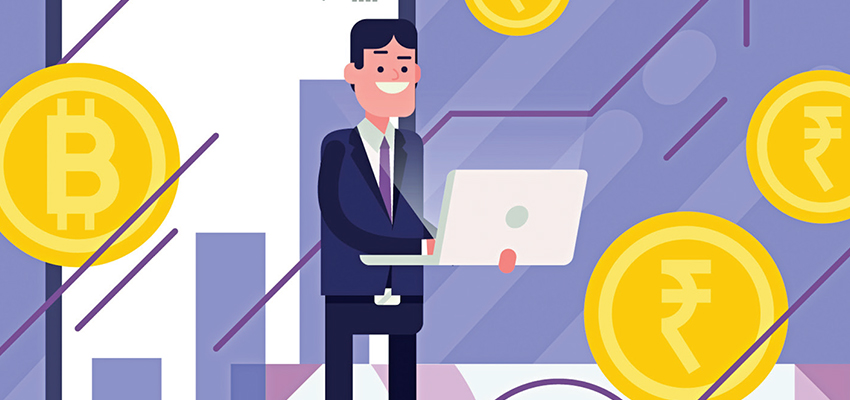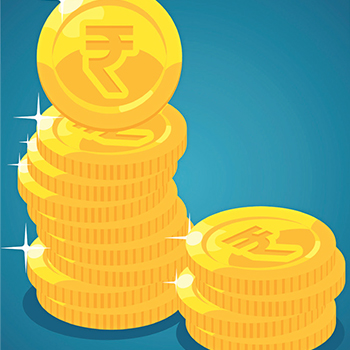Digital Rupee—will it make transaction easier for the common man?

Finally, banks have started issuing the Central Bank Digital Currency (CBDC) to their customers. Let’s delve into how will the digital rupee work, what are its advantages and will it really make transactions easier for the common man
Banks like SBI, PNB, BoB and HDFC have already started issuing the CBDC or Digital Rupee. The RBI started pilot testing of CBDC in November, 2022 in the wholesale segment and later it was extended to the retail segment (e`-R) on December 01, 2022.
“Country’s largest lender, State Bank of India recorded over nine lakh transactions in the Central Bank Digital Currency (CBDC) since its launch on December 1, 2022”, the bank’s Chief Technology Officer, Balaji Rajagopalan had informed on November 23. Also, SBI onboarded around 40,000 merchants in the CBDC pilot during this period, he had added.
The RBI Deputy Governor, T Rabi Sankar, on September 14, had said that around 15,000 transactions are taking place in a day in the pilot testing of retail CBDC.
However, the smaller banks are currently faced with the teething troubles like finalisation of the vendors who could provide the software solution for making it a possibility. Whatever be the case, it is estimated that all the banks will be having CBDC in their bouquet of offering by the end of the current financial year itself.
There are multiple advantages of using a CBDC in place of printed notes. First, it will help government save lot of money which goes into printing of the bank notes. A market estimate says that the government spends nearly Rs 5000 crore on printing of the bank notes of various denominations. Once, the CBDC takes the centre-stage, the burden on the exchequer will come down like anything. Secondly, because CBDC is RBI-backed, it is free from menaces like money laundering or volatility in the currency, which is a common phenomenon with the cryptocurrency. For starters, the RBI issues only one digital currency on behalf of Government of India, CBDC, which is a liability of the Central Bank.
AS Rajeev, Managing Director and CEO of Bank of Maharashtra, says, “In the initial phase, only the big banks are able to roll out CBDC. However, when it comes to the smaller banks, they are still in the process of launching the same as they are in talking terms with the vendors for the same.”
"RBI has achieved its target of hitting a million daily transactions in the retail segment of its Central Bank Digital Currency (CBDC) by the end of 2023 from upto 25,000 which was the case as on July-end"
How does the Digital Rupee work?

Well, the RBI will create tokens, and issue them to financial entities called Token Service Providers (TSPs), which are the banks selected for the Digital Rupee Pilot Programme. The TSP will then distribute the tokens to interested parties/ customers. The digital Rupee tokens will work in the same way as bank notes/coins, and you can use them in lieu of cash.
The good news is that the RBI has achieved its target of hitting a million daily transactions in the retail segment of its Central Bank Digital Currency (CBDC) by the end of 2023 from upto 25,000 which was the case as on July-end.
As per an end-of-the-year letter dated December 29 to RBI staff, the RBI Governor Shaktikanta Das says that the milestone of one million transactions in a day was surpassed on December 27, 2023.
You may store Digital Rupees in your bank’s digital wallet CBDC-R app. The digital wallet works in the same way as your cash wallet, except these transactions will be entirely paperless.
The e`-R pilot, which was launched almost a year ago, covered the five cities of Mumbai, New Delhi, Bengaluru, Bhubaneswar and Chandigarh. The e`-R is in the form of a digital token that represents legal tender. It is being issued in the same denominations that paper currency and coins are currently issued. It is being distributed through banks which are acting as the financial intermediaries. The e`-R offers features of physical cash like trust, safety and settlement finality. As in the case of cash, it will not earn any interest and can be converted to other forms of money, like deposits with banks.
The RBI has identified eight banks for phase- wise participation in the retail pilot project. These include the State Bank of India, the ICICI Bank, the Yes Bank and the IDFC First Bank, the Bank of Baroda, the Union Bank of India, the HDFC Bank and the Kotak Mahindra Bank. The participating banks have selected individuals/account holders for the trials.
Besides, a separate e` wallet has been conceived in the pilot considering that e` forms part of the currency system while other digital wallets form part of the payments system. Users will be able to transact with e`-R through a digital wallet offered by the participating banks and stored on mobile phones / devices.
Research shows that as more as 130 nations are inching towards a CBDC, putting the US Dollar at risk.
Some of the banks on an experimental basis, have already started issuing digital rupee to their employees as part of their monthly emolument.
An employee of a private sector lender, Kotak Mahindra Bank said that he gets digital rupee as part of his monthly salary from his employer. For example, he is allowed to consume that digital rupee for purposes like going to a gym on a regular basis. In case he is not habitual of going to a gym, he will have no option other than losing the digital rupee he was being given.
Although specific retail CBDC transaction data was not immediately available publicly, the central bank has been actively promoting the use of the retail e-rupee. At their end, the commercial banks have even offered incentives like cashbacks to boost the adoption of the retail CBDC and attract new users.
Coming on wholesale, the RBI has sought to broaden the use cases for CBDC and introduced it in the inter-bank call market in October.
Ajay Seth, Secretary, Department of Economic Affairs, Ministry of Finance says that the CBDC has the potential to reduce cross- border transaction cost to 2-3 per cent.
There are 35 crore active users on UPI, which roughly accounts for eight digital transactions a month by a citizen. The annual volume comes up to Rs 200 lakh crore. As per another estimate it is leading to about 4 per cent gain to our economy. It speaks volumes about the tremendous potential the digital transaction possesses and once it becomes popular, CBDC can play as a game-changer in the story.
India has some of the world’s most efficient digital platforms that include Aadhaar, issued to more than 1.35 billion residents; Ayushman Bharat, with nearly 220 million verified beneficiaries; the COWIN platform that delivered, seamlessly, more than two billion doses of the vaccine; DigiLocker, which has 5.6 bn documents issued; the government e-Market place-GEM, which has annual gross merchandise value of more than USD 14 bn; along with UPI that has grown leaps and bounds. Today, India accounts for more real time digital payments than the US, Europe and China combined.
Even though the wholesale pilot of CBDC kickstarted in October itself, volumes are not pretty well, as it is a test of the system, accounting and multiple things, and the pilot is to test all those things, said Ajay Kumar Choudhary, executive director, RBI, on the sidelines of an Assocham event sometime back.